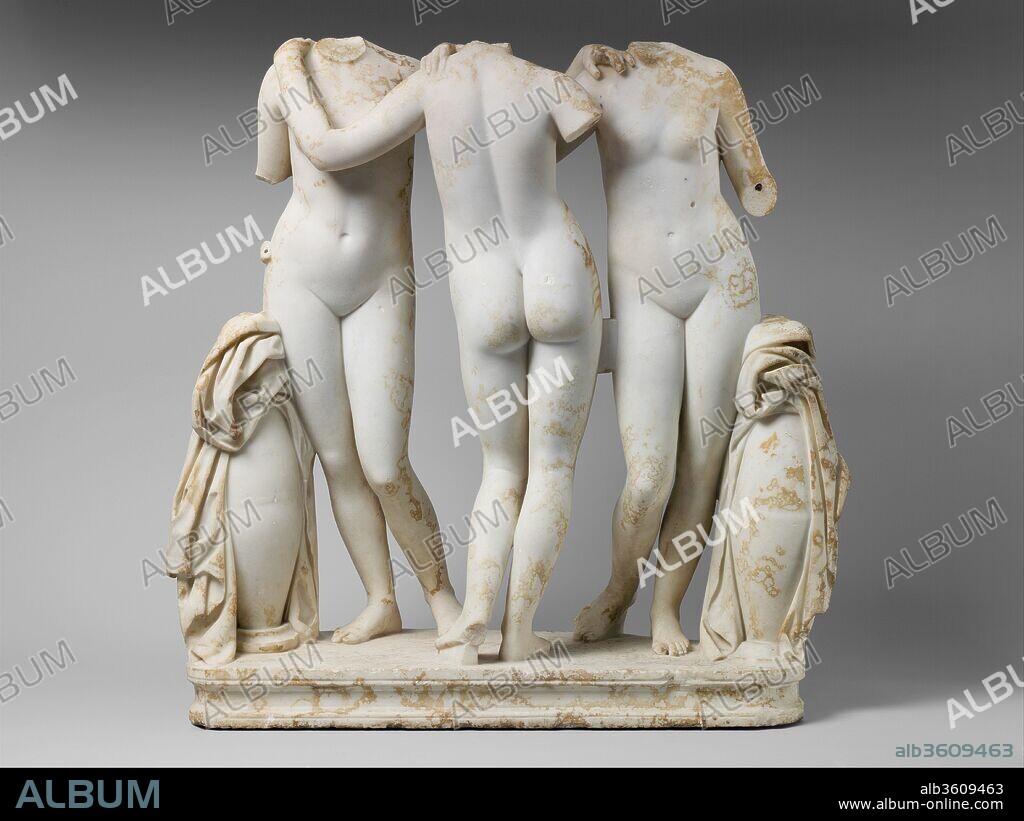alb3609463
Marble Statue Group of the Three Graces

|
Añadir a otro lightbox |
|
Añadir a otro lightbox |



¿Ya tienes cuenta? Iniciar sesión
¿No tienes cuenta? Regístrate
Compra esta imagen

Título:
Marble Statue Group of the Three Graces
Descripción:
Ver traducción automática
Marble Statue Group of the Three Graces. Culture: Roman. Dimensions: Overall: 48 7/16 x 39 3/8in. (123 x 100cm). Date: 2nd century A.D..
Roman copy of a Greek work of the 2nd century B.C.
These young girls, linked in a dance-like pose, represent The Three Graces: Aglaia (Beauty), Euphrosyne (Mirth), and Thalia (Abundance). They bestow what is most pleasurable and beneficent in nature and society: fertility and growth, beauty in the arts, harmonious reciprocity between men. They enjoyed venerable cults in Greece and Asia Minor. In mythology, they play an attendant role, gracing festivals and organizing dances. Their closest connection is with Aphrodite, whom they serve as handmaidens.
This carefully calculated, frieze-like composition is typical of classicizing art of the second and first centuries B.C. Instantly recognizable, it soon became the canonic formula for representing the Graces, who appeared in every medium and on every kind of object, from mirrors to sarcophagi.
Reportaje:
Técnica/material:
MARMOL
Periodo:
imperial
Museo:
Metropolitan Museum of Art, New York, USA
Localización:
ROMAN EMPIRE
Crédito:
Album / Metropolitan Museum of Art, NY
Autorizaciones:
Modelo: No - Propiedad: No
¿Preguntas relacionadas con los derechos?
¿Preguntas relacionadas con los derechos?
Tamaño imagen:
4282 x 3212 px | 39.3 MB
Tamaño impresión:
36.3 x 27.2 cm | 14.3 x 10.7 in (300 dpi)
Palabras clave:
 Pinterest
Pinterest Twitter
Twitter Facebook
Facebook Copiar enlace
Copiar enlace Email
Email
